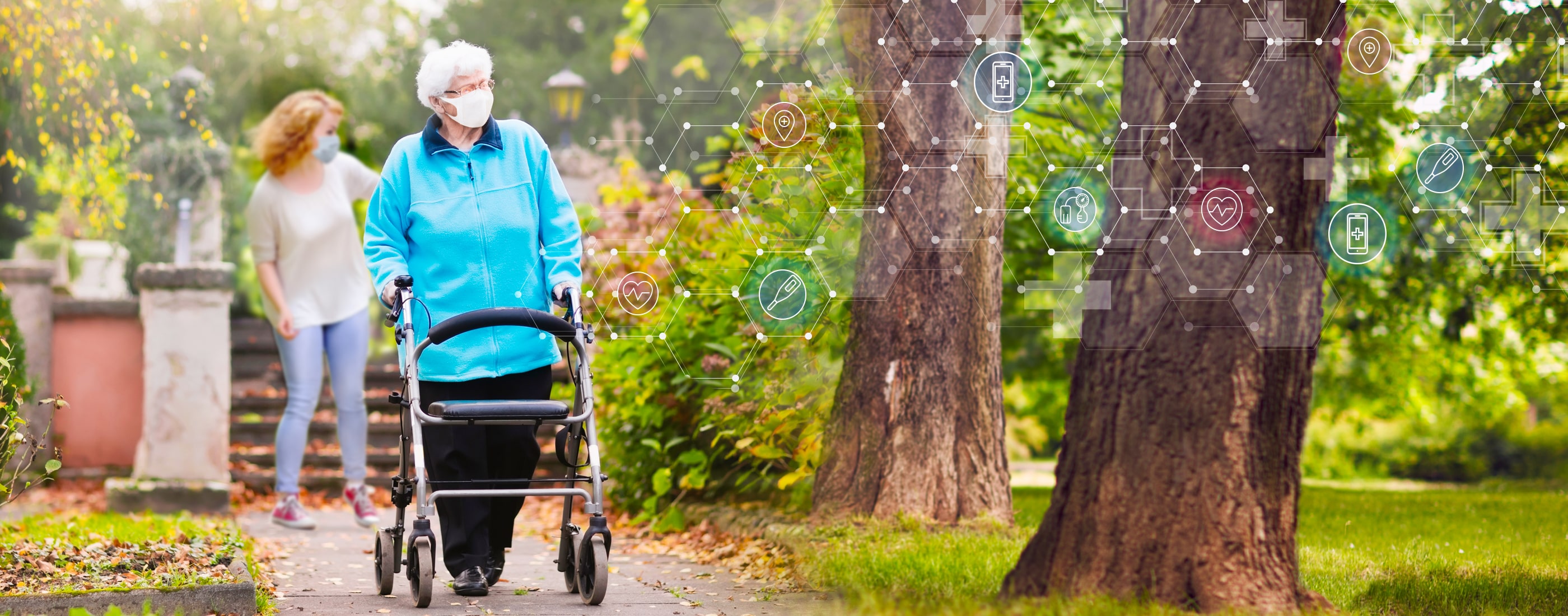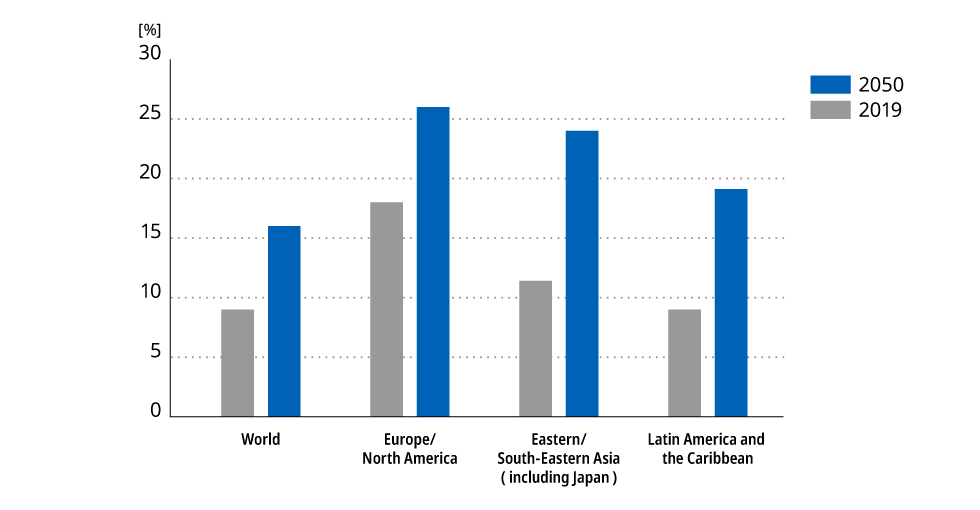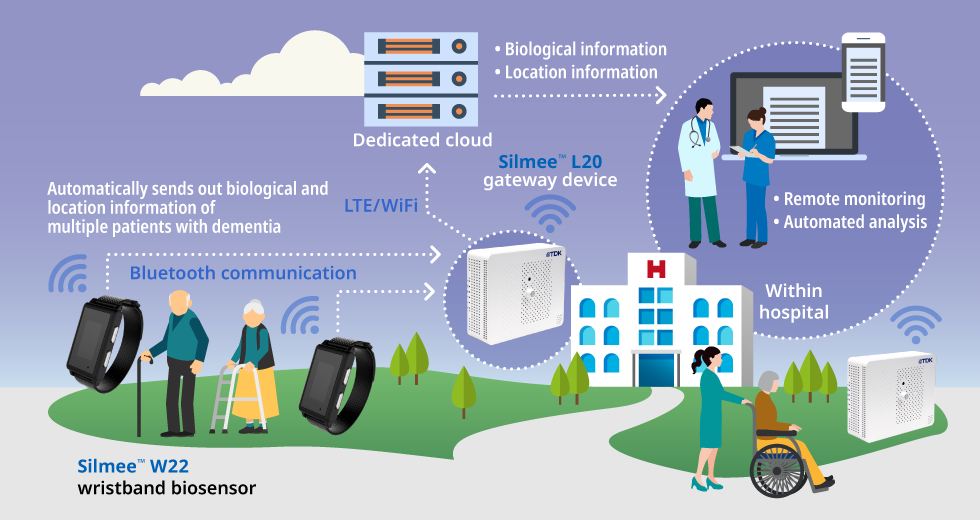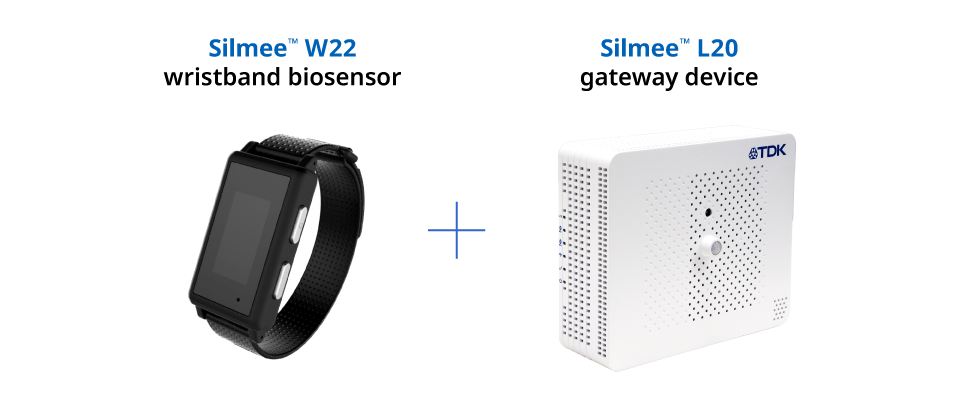What IoT Devices Can Do to Alleviate the Strain on Frontline Healthcare Workers
A Challenge in Remote Monitoring Essential for Worldwide Aging Society
According to estimates by the United Nations (World Population Prospects 2019), the world's population continues to grow fast, and is expected to reach nearly 10 billion in 2050, up from approximately 7.7 billion in 2019. Average life expectancy is also increasing. As of 2019, the population aged 65 years or over make up 9% of the total population; the proportion is estimated to reach 16% in 2050. Population aging is most advanced in Japan, and the trend is growing in Europe and North America too, where one in four people will be aged 65 years or over by 2050. In East and South-East Asia, the number of people aged 65 years or over is expected to double between 2019 and 2050, reaching almost 900 million.
As the elderly population is on the rise, so is the cost of healthcare, which is a global problem. One of the ways to curb the increases in healthcare cost is to prevent the conditions of elderly patients from becoming so serious as to require long-term hospitalization. To ensure optimal wellbeing, measures such as daily health management and early detection of disease onset are indispensable. At the same time, it is also vital to secure the human resources required for healthcare and to reduce mental stress on family members. One promising solution to this problem is remote monitoring, which is a form of telehealth1.
The type of remote monitoring required for the elderly consists of systems that allow doctors, nursing care staff, families, etc. to primarily monitor their vital signs including heart rate even from a great distance. Keeping track of vital signs is essential in routine health management, prevention or early detection of an illness, or swift emergency care. To do so, we need the use of wearable sensors that elderly people can put on and take wherever they go and a network system with simple connection between home and hospital or within a healthcare facility that we can establish quickly and with ease.
A Remote Monitoring System Solution Using Biosensors and Gateways
TDK’s Silmee™ Series is an IoT device designed for multiple applications, such as the daily health management of the elderly. Combined with wireless communication devices, it also easily enables the creation of systems for the remote monitoring of biological information, such as vital signs and positional information.
The wristband biosensor Silmee W22 is a wearable device with multiple sensors. When worn, it can automatically measure and save vital signs (e.g., activity volume, pulse, sleep time) and conversation volume. It also has a function that can transfer data to smartphones and other gadgets via Bluetooth communication. The gateway Silmee L20 is a device that serves as a node (relay point) connecting different communication networks.
At the home of an elderly person who lives alone and wears the Silmee W22, biological information such as vital signs and how much they talk can be obtained, as well as. With a Silmee L20 gateway device placed in his/her home, a remote monitoring system can be established - very simply (Figure 1).
At community medical and nursing care facilities, care providers need to keep an eye on their elderly residents and patients with dementia at all times. TDK's Silmee W22 biosensor can also send out beacons2 (only for location detecting) as an additional function. Combined with Silmee L20 gateway devices, it allows care providers to obtain data on the location of the wearer and to monitor when he/she is near a danger area. A Silmee L20 gateway device can be installed or moved without requiring extensive work, which lowers the barrier to introducing it in a facility (Figure 2).
These verification tests have already been conducted experimentally in Japan, the world’s most aged country. This has made it easier for doctors to collect data over the long term, enabling them to discover symptoms that are difficult to find in short-term screening. As the global aging society progresses, TDK will strive to spread remote monitoring through the Silmee™ series.
Figure 1. System for the "Round-the-clock remote monitoring" of vital signs of an elderly person or a home-care patient living alone
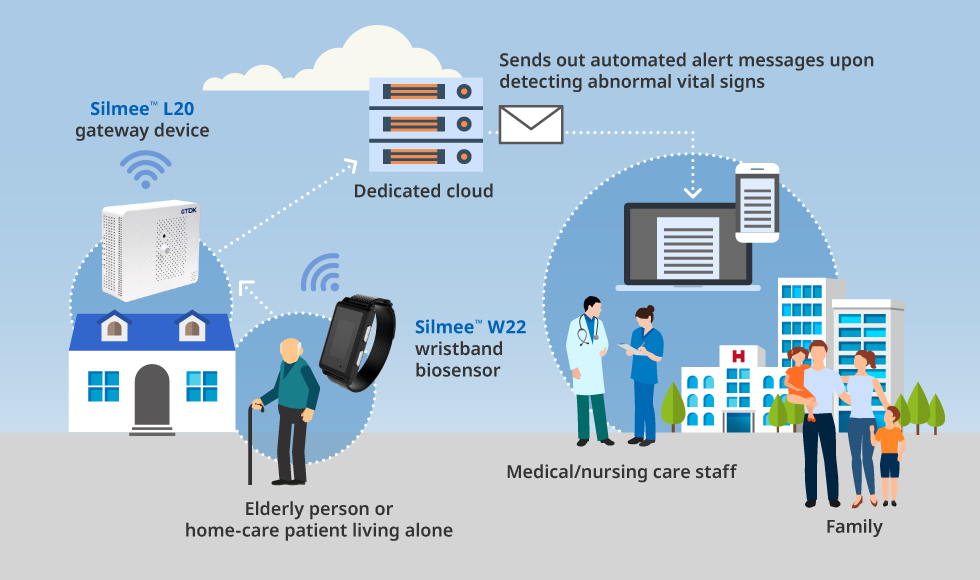
With the battery life reaching approximately 10 days, running 24 hours on a single charge, the Silmee W22 biosensor can record the amount of physical activity for about a month (recording data every minute for 32 days; *days are an estimate; may be reduced depending on usage). By combining it with a Silmee L20 gateway device, TDK offers a proprietary Silmee (vital signs, location, and environment) remote monitoring platform.
Terminology
- Telehealth: The act of performing medical examinations and providing medical treatment using ICT technology without direct contact between doctors and patients. It has been increasingly adopted in Europe and America and is expected to progress rapidly in the Asia Pacific region such as Japan, China, and India.
- Beacons: A beacon is a general term for technologies that broadcast Bluetooth signals to terminals to indicate their location, and so on.
Related links
Product inquiries by email
